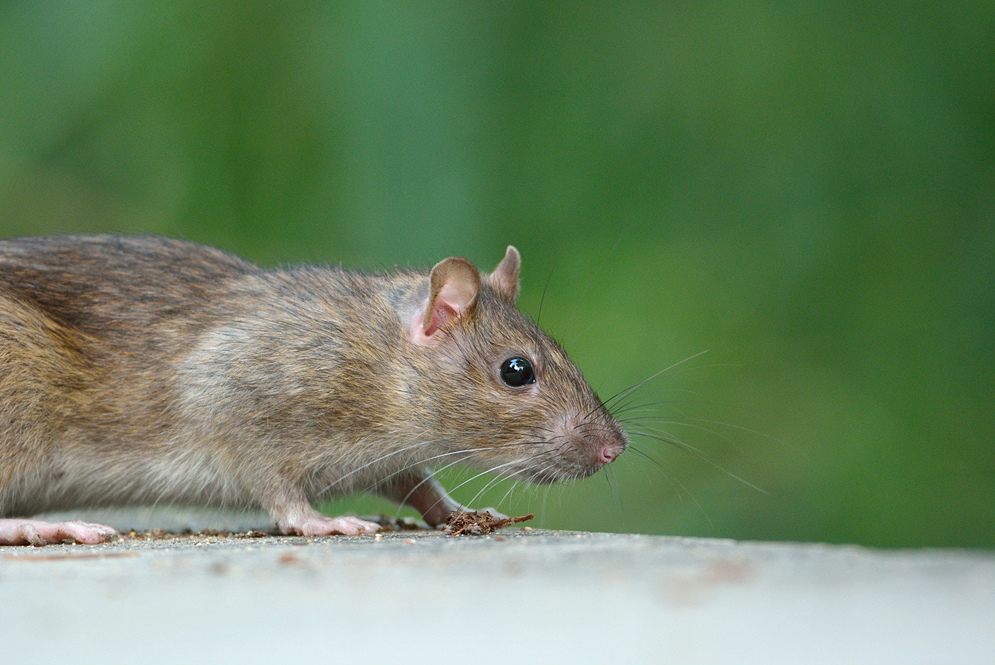One District in Paris Is Creating a Map of Rat Sightings
The rodent map marks reports of animals both dead and alive.

One Paris politician is fed up with the city’s rats. Geoffroy Boulard, who represents the 17th arrondissement, which starts just north of the Arc de Triomphe, has created a real-time map on which constituents can report rat sightings.
In theory, the map is meant to bring the district’s rat problem to the attention of Anne Hidalgo, the city’s mayor. Hidalgo, however, is well aware that Parisians are feeling overrun by rats; last year, the city pledged 1.5 million Euros—more than $1.7 million—to rat eradication.
According to Boulard’s map, it’s not working very well. The map displays reports of “Rat vivant” (a live rat) and “Rat mort” (a dead rat). The distict’s residents have reported rats day and night, gathering by dozens around the garbage under a wall, in front of a creche, in a nest of near the mouth of a sewer (naturally), in the buildings and in the streets, walking in plain sight, and running across the tennis court while people are playing. They have seen dead rats in cellars, lying in the sidewalks, and in the streets, smushed by a car. The map says only one of these rats has been dealt with by authorities.
Like many big cities, Paris has long been home to rats that live aside humans. In the 14th century, rats brought plague from further south, and Parisians have never forgiven them. In the siege of 1870 to 1871, hungry Parisians resorted to eating rats as part of their limited diet. A couple years later, Paris’s most famous exterminator shop—featured in the movie Ratatouille—opened downtown. In 1912, the rats were numerous enough to merit mention in Rowland Strong’s Sensations of Paris. He wrote:
“To-day the rats are still very numerous. Their presence in this neighborhood is another cause of attraction to all the homeless cats of Paris,… At midnight the Boulevard Saint Germain, the Boulevard Montparnasse, the Boulevard Saint-Michel, are alive with rats, gamboling round the trees which line the side-walks —rats of the big brown species, which years ago exterminated the old ingenious grey rat of Pairs, fearless and familiar almost to the point of being tame.”

But in the past few years, perhaps due to overpopulation underground, rats have been appearing on the streets in greater numbers than Parisians are comfortable with. Even after a promised anti-rat campaign in 2014, “Paris is facing its worst rat crisis in decades,” the New York Times reported in 2016. One possible explanation is new regulations on rat poisoning, which limit the use of poisons that can get into the water supply and encourage the use of bait stations, instead.
Whatever the cause, nothing Paris has done so far has helped: The city’s rat population has stayed stable at around 1.75 rats per person, or approximately 3.8 million rats in the 20 inner arrondissements. Last year, overworked rat catchers went on strike for a day; earlier this year sanitation workers posted a video of dozens of rat squirming in a trash bin, a sight that could impress even a rat-hardened New Yorker.
The 17th arrondissement may be seeing a particular influx of rats, as there’s ongoing construction on a metro line extension in the area. Boulard’s rat-map stunt is unlikely to change this situation in any way. Rats aside, the reports make life in Paris seem pretty pleasant, with all the tennis and creches. Perhaps the rats are just trying to enjoy Paris’ charms.














Follow us on Twitter to get the latest on the world's hidden wonders.
Like us on Facebook to get the latest on the world's hidden wonders.
Follow us on Twitter Like us on Facebook